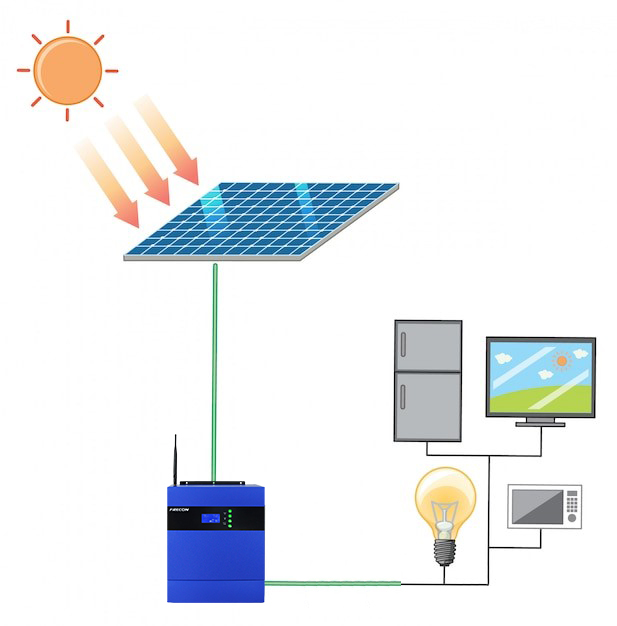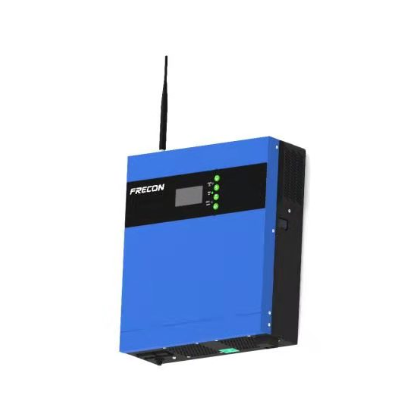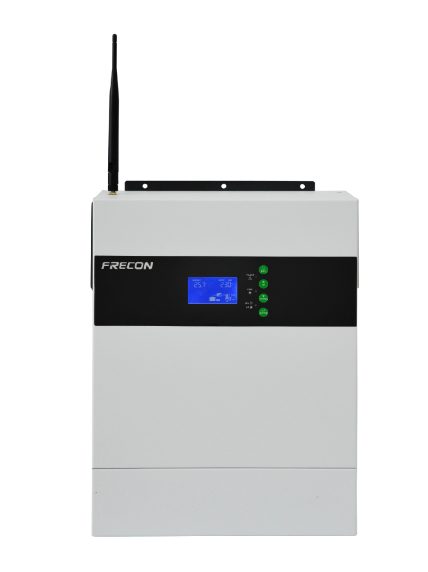Inverters are essential to renewable energy sources development, as they convert DC electricity to AC electricity and power devices. Off-grid inverters are used in solar power systems not connected to a grid. However, off-grid inverters also require maintenance like other electronic devices to ensure top-notch performance and a long-lasting life span. This article provides a comprehensive guide on the off-grid inverter, covering its application, maintenance methods, and the best off-grid inverters available today.

What is an Off-grid Inverter?
Compared to a grid-tied inverter that transforms the DC power from the grid into AC power and transfers the excess power to the grid, an off-grid inverter works independently and uses the energy generated by solar panels to power electronics. In addition, there is another form of the inverter, called a hybrid inverter, that has both grid-tied and off-grid inverters capability. It can intelligently handle power coming from solar panels, batteries, and the grid simultaneously to provide continuous access to electricity.
What are the Applications of Off-grid Inverters?
l Power Homes and Remote Cabins: Off-grid inverters are helpful for homes and remote cabins that don't have a grid supply.
l Electrify Rural Areas: Off-grid inverters provide a cost-effective way to provide electricity in remote rural areas where a power grid is not present. They are used to power homes, schools, and other facilities in rural areas.
l Emergency Backup Power: Off-grid inverters are also used as emergency backup power in areas that are valuable to power outages due to weather, natural disaster, or other calamities.
l Agriculture and Farming: Off-grid inverters are useful in the agriculture and farming industry to power pumps, fans, lights, and other electronics.
l Scientific Research: Off-grid inverters are also used in scientific research centers that need a continuous and independent supply of power to keep sensitive equipment running non-stop.
In short, there are plenty of applications for off-grid inverters, and their demand is also increasing with the increasing cost of grid electricity and growing concerns about climate change.
Maintenance Methods for Off-grid Inverters
Off-grid inverters need regular maintenance to ensure top-notch performance and avoid costly repairs. below are some of the recommended maintenance methods for off-grid inverters:
1. Remove Dust Regularly:Dust can accumulate on the surface of the inverter over time. The foreign matter can compromise efficiency and even result in more heating. Therefore, you should regularly remove dust from the inverter using a dry, soft cloth.
2. Keep the Inverter Cool: Another critical maintenance practice is to ensure that the inverter never gets overheated. It is normal for an inverter to heat up during regular use, but you should prevent it from overheating.to achieve this, ensure proper airflow and ventilation, and make sure the cooling fan is functioning correctly.
3. Battery Maintenance: Since off-grid inverters rely heavily on batteries, regular battery maintenance is essential, including checking the electrolyte levels.
4. Inspect Connections: Inspect all inverter connections carefully, checking for damaged wires or loose connections. This helps to pinpoint hardware issues before they become serious.
5. Monitor Performance: Keep a close eye on the off-grid inverter performance, such as output voltage, frequency, warning messages, error codes, etc.
FRECON Off-grid Inverters – The Ideal, Feature-Rich Inverters You Need
FRECON is a well-reputed company in green new energy, energy saving, and industrial automation. With over ten years of market experience, FRECON has designed some best-in-class off-grid inverter solutions. FRECON's off-grid inverters are known for their robust build quality, advanced features, and high efficiency. Below is a glimpse of two of the top-notch FRECON off-grid inverters:
SP500
FRECON SP500 series is a hybrid off-grid solar inverter with a power range between 1.2KVA-2.4KVA. It is known to deliver pure sine wave output with 94% efficiency. Some of the key features of SP500 are as follows:

ü Configurable AC/Solar charger priority
ü Built-in MPPT solar charger controller to facilitate the operation of charge battery systems
ü Compatible with generator power or mains voltage
ü Configurable output source priority
Top-notch protection from overload, under-voltage, over-voltage, and short-circuit
In short, SP500 delivers reliable and efficient performance, making it the ideal off-grid solar inverter for homes, cabins, camping, communication towers, and remote industrial applications.
SP520

ü Built-in 120-450V MPPT solar charger controller
ü Compatible with grid power or generator power
ü Support no battery operation function
ü Configurable output source priority
ü Top-notch protection from overload, under-voltage, over-voltage, and short-circuit
In short, SP520's powerful and intelligent functionalities make it best in a wide range of applications, such as large off-grid homes, remote workstations, agriculture, emergency response, etc.
Overall, FRECON SP500 and SP520 are two reliable and versatile off-grid inverters that can serve in many applications with high efficiency.
Conclusion
An off-grid inverter is an ideal power solution in places with nonexistent grid supply or you want a consistent and renewable electricity supply. It is necessary to ensure regular maintenance to make off-grid inverters work at their optimal level. However, if you are still in the phase of finding a reliable, efficient off-grid inverter, then FRECON's feature-rich off-grid inverters are the best choice. With their robust build quality and advanced features,FRECON off-grid inverters can fulfill off-grid power needs in various applications.





